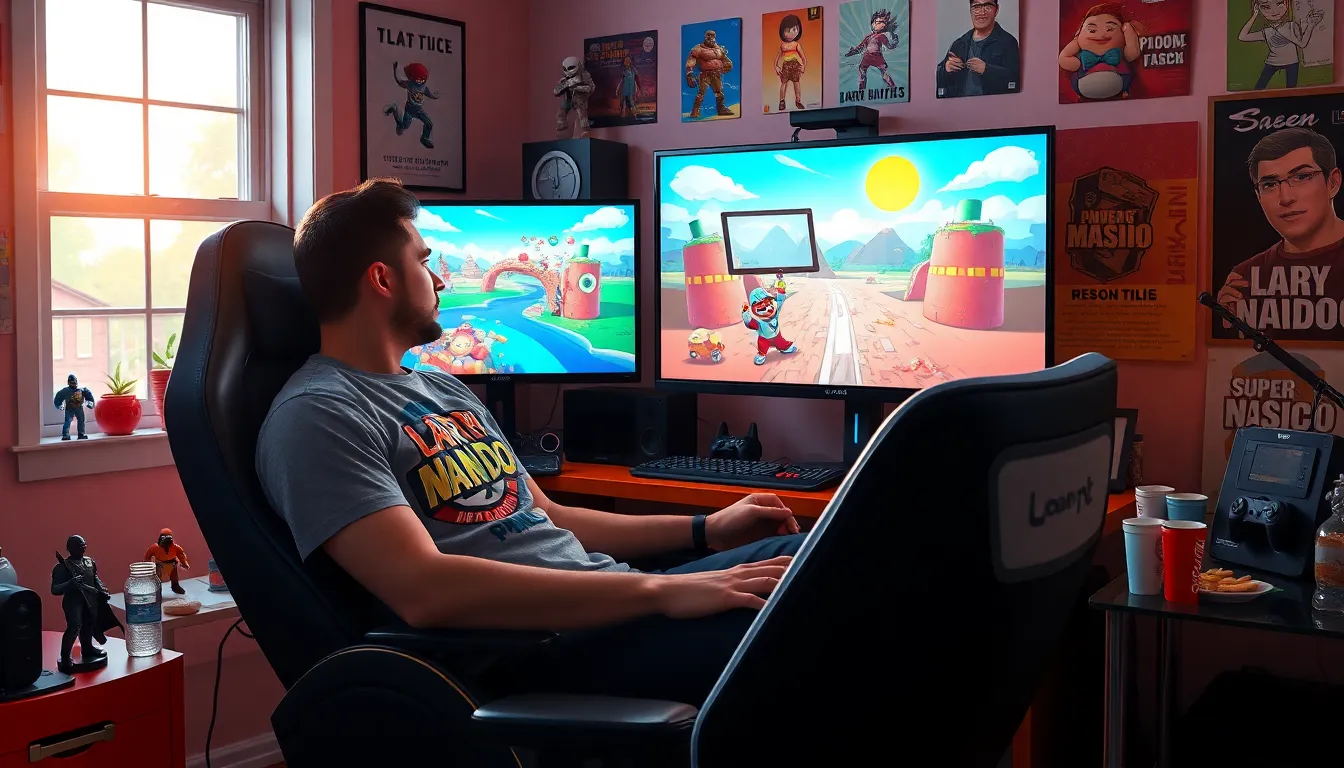In a world overflowing with trends and buzzwords, “rjldfhc” might just sound like the latest secret code or a typo gone rogue. But hold onto your keyboards; this quirky term is about to take center stage. It’s more than just a jumble of letters—it’s a concept that could redefine how we think about innovation and creativity.
Table of Contents
ToggleOverview of RJLDfhc
RJLDfhc signifies a pivotal concept influencing innovation and creativity. This section delves into its background and the purpose behind reviewing it.
Background Information
RJLDfhc emerged from a blend of theoretical frameworks and practical applications. Scholars and creators across various disciplines engage with RJLDfhc to unlock new methodologies. This term encapsulates the intersection of technology, art, and business, facilitating fresh approaches to problem-solving. It serves as a catalyst for change, prompting discussions in academic and industry circles alike. As a result, RJLDfhc shapes contemporary thought, urging individuals to explore uncharted territories in their fields.
Purpose of the Review
The review aims to dissect RJLDfhc’s implications for innovation and creativity. By examining its core principles, readers uncover its relevance to emerging trends and technologies. This exploration highlights how RJLDfhc challenges traditional paradigms, encouraging a shift in perspective. Furthermore, the review identifies key insights that practitioners can integrate into their strategies. Ultimately, a clear understanding of RJLDfhc fosters enhanced collaboration and innovation across various sectors.
Key Features of RJLDfhc

RJLDfhc encompasses several vital characteristics that enhance its impact in innovation and creativity. Understanding these features offers insights into its significance within various fields.
Unique Offerings
RJLDfhc introduces several groundbreaking methodologies aimed at redefining problem-solving. This concept promotes collaboration across different disciplines, integrating technology, art, and business. By fostering an environment that encourages interdisciplinary partnerships, RJLDfhc generates unique solutions that traditional approaches overlook. Its focus on contemporary challenges equips practitioners with tools to navigate complex scenarios effectively. This holistic perspective aligns with current trends, enabling stakeholders to adapt to ever-evolving markets.
Comparative Analysis
Compared to conventional frameworks, RJLDfhc distinguishes itself through its versatile applications. Various sectors, including education, industry, and the arts, benefit from its adaptive nature. While traditional methods often limit creativity, RJLDfhc encourages exploration beyond standard boundaries. In this approach, adaptability plays a crucial role, fostering dynamic solutions tailored to specific issues. By analyzing success stories and practical implementations, RJLDfhc showcases its effectiveness and presents a compelling case for shifting from older methodologies. Such comparisons highlight the potential for enhanced collaboration and innovation across sectors.
User Experience with RJLDfhc
User experiences with RJLDfhc reveal valuable insights regarding its practical application and effectiveness. Feedback highlights how users find RJLDfhc essential in driving creativity and collaboration.
Feedback from Users
Users often praise RJLDfhc for its intuitive approach to fostering innovation. Many individuals indicate improved workflow and enhanced teamwork due to its unique methodologies. Some users report experiencing increased engagement in their projects. It is common for teams to implement RJLDfhc principles, leading to more dynamic problem-solving. Feedback consistently emphasizes its ability to integrate into various disciplines, emphasizing versatility. Overall, comments reflect a strong appreciation for how RJLDfhc transforms traditional processes into more effective pathways.
Case Studies
Numerous case studies illustrate the successful implementation of RJLDfhc in diverse sectors. In education, institutions that adopted RJLDfhc noted higher student collaboration rates and creative outputs. A tech company utilized RJLDfhc to streamline project development, resulting in a 30% faster time-to-market. Smaller creative agencies apply RJLDfhc principles and have reported notable increases in client satisfaction and project innovation. Nonprofits have also benefited, using RJLDfhc to enhance community engagement through collaborative events. Each case underscores its adaptable nature and impactful outcomes across various fields.
Pros and Cons of RJLDfhc
RJLDfhc presents distinct advantages and disadvantages that impact its application across various fields.
Advantages
Flexibility stands out as a primary advantage of RJLDfhc. This concept fosters collaboration among diverse disciplines, encouraging integration of technology, art, and business strategies. Enhanced creativity emerges from the interplay of ideas, generating innovative solutions that defy traditional methods. Successful case studies showcase impressive outcomes, with some organizations reporting a 30% faster time-to-market. Improved workflow and collaboration also lead to heightened productivity across teams, making RJLDfhc an essential tool in today’s fast-paced environment. Additionally, RJLDfhc adapts to various sectors, offering applicable methods for education, industry, and the arts.
Disadvantages
Despite its strengths, RJLDfhc holds some drawbacks. Initial implementation may pose challenges, as organizations require time to adjust to new methodologies. Resistance to change from established norms can hinder acceptance among team members. Additionally, potential oversimplification of complex problems might occur when relying solely on RJLDfhc’s principles. Some users may find the concept abstract, leading to confusion or misinterpretation. Limited awareness of RJLDfhc could also restrict its adoption, ultimately affecting its widespread effectiveness.
RJLDfhc stands as a beacon of innovation and creativity in today’s rapidly evolving landscape. Its ability to bridge technology, art, and business fosters a collaborative environment that encourages fresh solutions to complex challenges. As practitioners embrace this concept, they unlock new methodologies that redefine traditional approaches and enhance teamwork.
While RJLDfhc presents exciting opportunities, it’s essential to navigate its challenges thoughtfully. Understanding both its advantages and potential drawbacks will empower users to implement it effectively. As RJLDfhc continues to gain traction, it promises to reshape the future of creative collaboration across various sectors, driving significant advancements in how individuals and organizations approach problem-solving.



